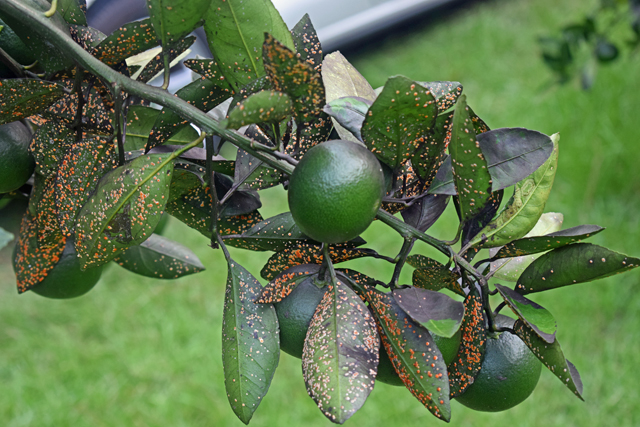
Figure 1. Aschersonia aleyrodis, entomopathogenic fungi feeding on immature whiteflies on a satsuma mandarin tree. Photo credit: Doug Mayo, UF/IFAS.
Proper plant disease and insect identification is essential in agriculture production. A prime example that we have seen in North Florida citrus is the presence of “friendly fungi”, an entomopathogenic fungi that attacks citrus whitefly and cloudywinged whitefly nymphs (Figure 1 and 2). The phrase, “there is more here than meets the eye” certainly comes to mind. At first glance, it looks like the grove is being plagued with a new citrus disease or a new species of scale, when in fact, the whitefly nymphs are being controlled by a beneficial and naturally occurring biological control agent!
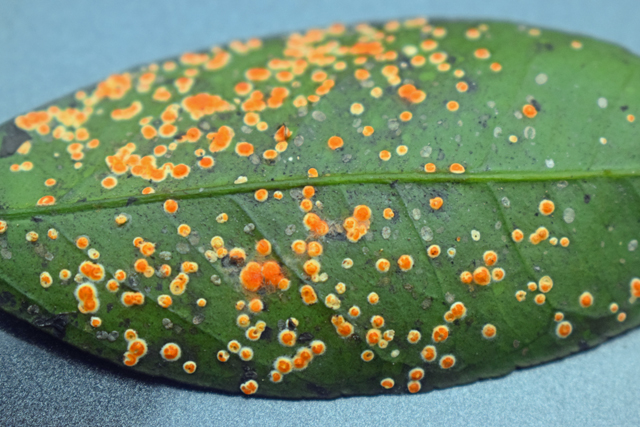
Figure 2. Aschersonia aleyrodis fungus on the underside of a satsuma leaf. Photo credit: Doug Mayo, UF/IFAS.
–
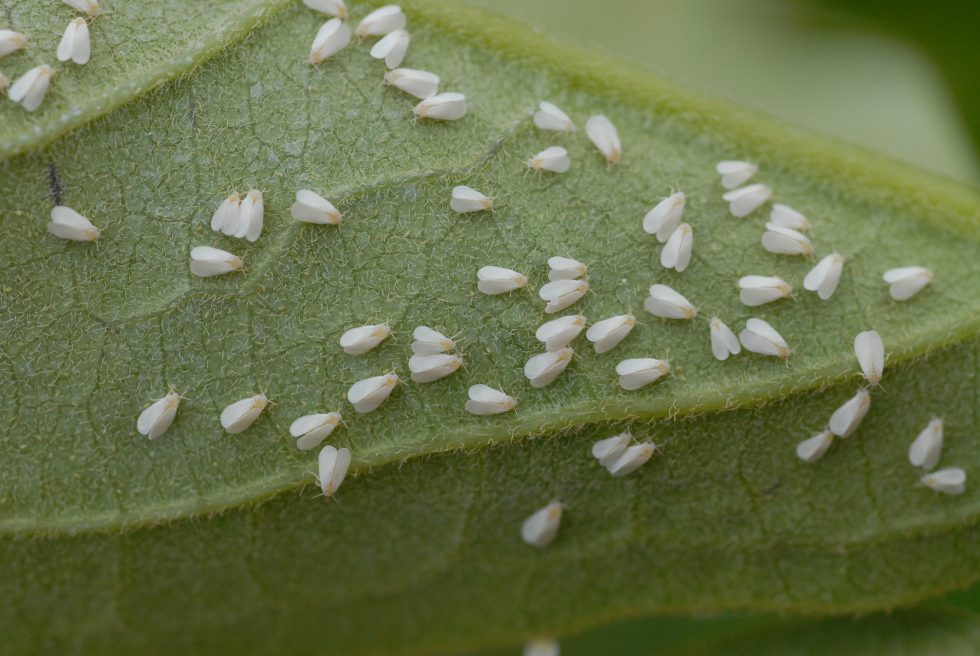
Figure 3. Adult citrus whitefly, Dialeurodes citri feeding on the underside of a leaf. Photo Credit: Lyle Buss, UF/IFAS Entomology & Nematology
–
The citrus whitefly (Dialeurodes citri) and the cloudywinged whitefly (Singhiella citrifolii) are two insect pest species of whiteflies that occasionally cause injury to citrus. The adults are small, white and resemble tiny moths (Figure 3). Adults lay eggs on the underside of leaves and eggs hatch into nymphs (Figure 4). The nymphs cause injury to the plant by feeding and consuming large quantities of sap. As a result of the large amount of sap consumed, nymphs excrete honeydew which causes growth of sooty mold fungi. Severe sooty mold infestations give plants an unhealthy appearance and can reduce plant photosynthesis.
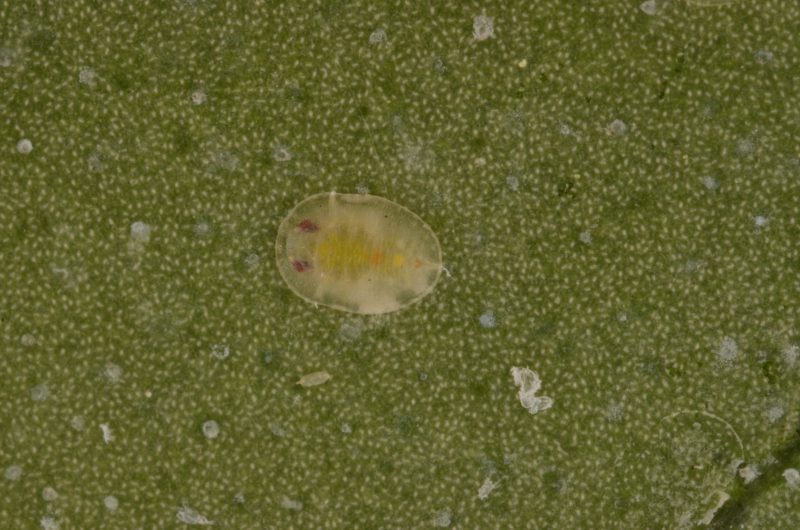
Figure 4. Citrus whitefly nymph feeding on the underside of leaf. Photo credit: Lyle Buss, UF/IFAS Entomology.
–
Citrus whiteflies have historically been controlled by a suite of predators including two strains of the entomopathogenic fungi, Aschersonia aleyrodis, the red strain and Aschersonia goldiana, the yellow strain. The red strain infects the citrus whitefly and the yellow strain infects the cloudywinged whitefly. These fungi are commonly referred to as “friendly fungi”. Both strains are present in North Florida and are normally observed from mid-August through mid-September, following the rainy season.
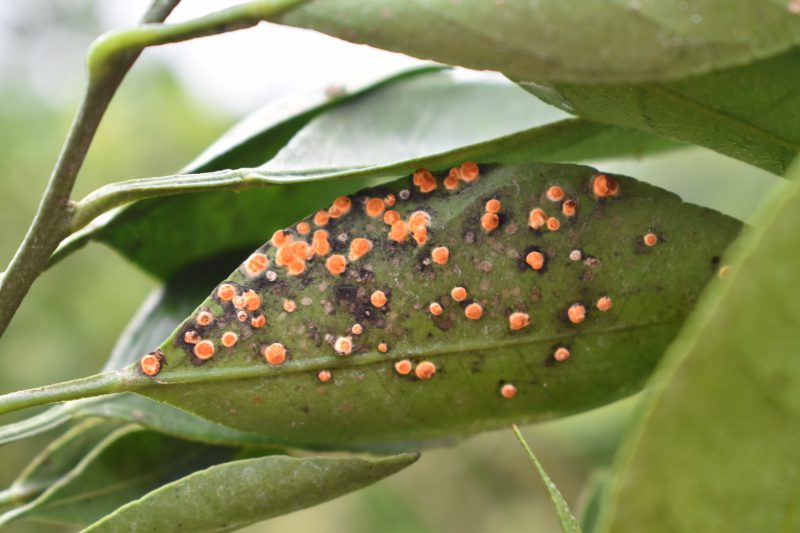
Friendly fungus attacking whitefly nymphs that are feeding on the underside of a satsuma leaf. The black growth is sooty mold, caused by the whitefly nymphs. While this leaf looks bad, the friendly fungus is helping to reduce the whitefly population. Credit: Danielle Williams, UF/IFAS
–
The friendly fungi can be clearly seen from a distance with their bright red and/or yellow spots. While it may be a scary sight to see, the entomopathogenic fungi does not harm the tree and is beneficial in helping control whitefly populations! For more information, please contact your local UF/IFAS Extension Office.
- Discover the Sweet Potential of Persimmons at the UF/IFAS Persimmon Field Day – October 23 - September 12, 2025
- 2025 Big Bend Pesticide Safety Training Series – September 8-11 - July 18, 2025
- Mechanical Pruning of Citrus Groves - March 7, 2025
